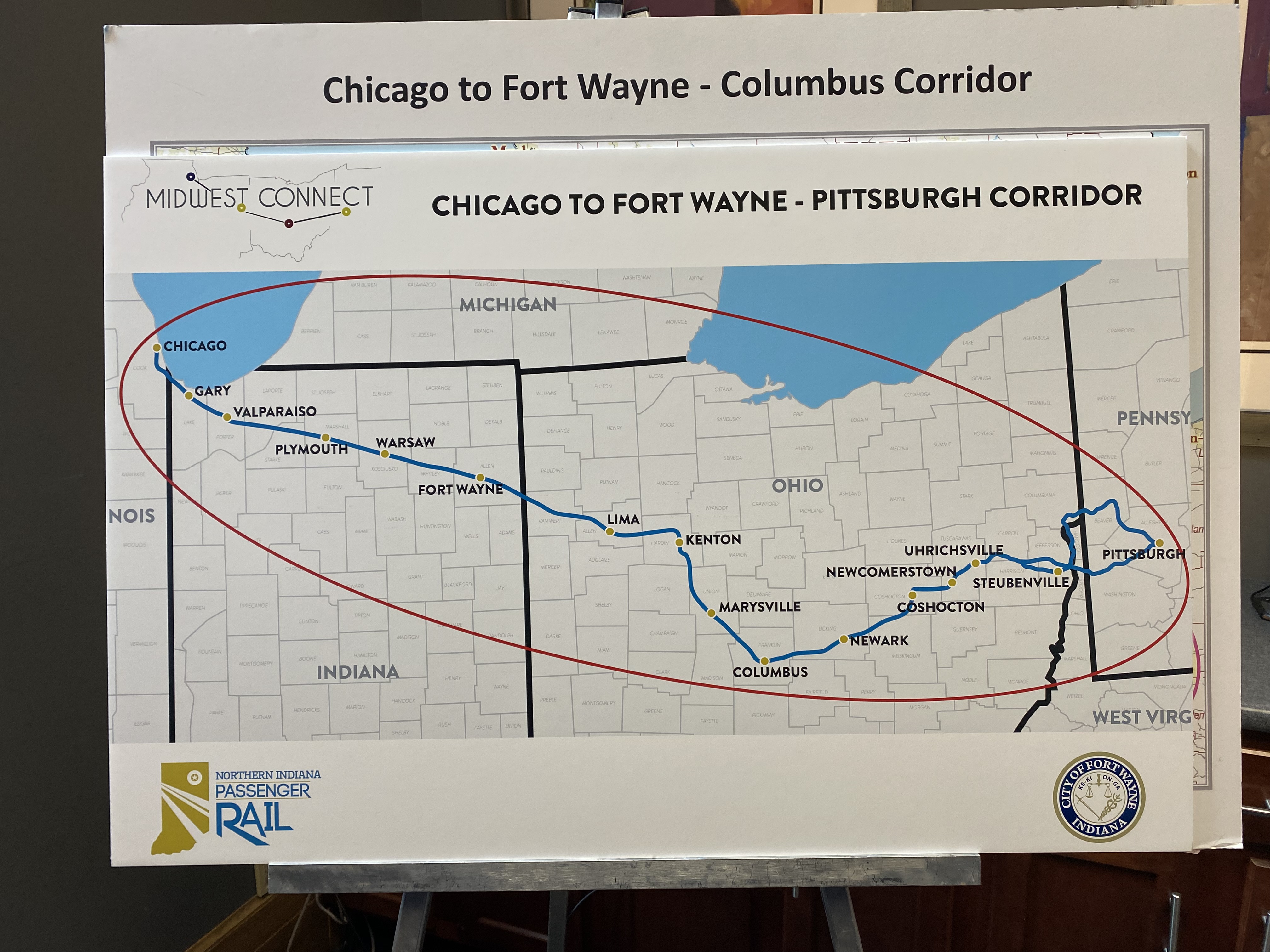Connecting the Crossroads: Passenger rail proposal picks up steam
A small, suburban cul-de-sac starts Judson Everett’s two-and-a-half-hour commute.
“The commute has kind of become just a normal part of life,” Everett said.
He’s a professor of sociology at Loyola University. During the school year, he travels to the Chicago campus from Warsaw, IN three times a week. Shocking some students.
“They think I’m crazy.”
In a few years, his drive may be limited to a short trip downtown.
Warsaw is one of the planned stops along the Midwest Connect Corridor; a proposed train route stretching across five states. It would start at Chicago’s Union Station and end in Pittsburgh, PA, cutting through Indiana from Gary to Fort Wayne.
Michiana would see stops in Valparaiso, Plymouth, and Warsaw.
“I actually often wonder why we don’t have this already,” Everett said.
The Northern Indiana Passenger Rail Association (NIPRA) has funded a federal grant application for the Corridor Identification & Development (ID) Program through the Federal Rail Administration. Selected corridors would earn a $500,000 grant to help with planning, then prioritize these capital projects for federal funding.
Kosciusko Chamber of Commerce President and CEO Rob Parker sees the return to the tracks as a transformational opportunity to connect Warsaw, a town of about 16,000, to cities with a combined population totaling about four and a half million.
Parker believes the project will help build Warsaw’s multi-billion dollars medical orthopedics industry, attract talent, and develop the city’s downtown.
“It allows our cities to really start growing again from the core,” Parker said. “The car took us out to suburbs. But the core of a city is where the heartbeat of a community is.”
A train route to Chicago has been discussed since before Warsaw Mayor Joe Thallemer was elected in 2012. Even if approved, construction will run past Thallemer’s final day in office at the end of his current term.
“It’s a huge project. But that’s the problem, it’s a huge project,” Thallemer said.
He’s learned not to get his hopes up.
The location of a potential passenger rail stop in Warsaw isn't even set in stone. It could be the old train depot on S Lake St or even overlooking Wynona Lake.
“I can’t get excited because I’m now more realistic than I was then. But I still have a passion to get it done,” Thallemer said. “I mean I would literally love to just jump on the train and head up to Chicago.”
At the decommissioned train station in downtown Fort Wayne, which would also be included on the route, NIPRA President Fred Lanahan believes planning is on the fast track. Far enough along it’s not a matter of if this project will happen, just when.
“We figure our time has come,” Lanahan said.
The Midwest Connect project is one of three Corridor ID grant applications out of Indiana, along with a proposed route from Indianapolis to Chicago and another connecting Louisville to Indy.
Federal dollars would cover up to 90 percent of upfront costs to build the infrastructure. The project would add thousands of construction jobs to build new signaling, side rails to pass freight trains, then long term workers would be needed for upkeep of the track.
NIPRA studies project revenues would begin covering operating costs in 10 to 14 years, providing transportation across five states from the heart of 16 communities.
“And cheaper transportation for me to go to Chicago for example than it would be to park in downtown Chicago if I drove,” Lanahan said.
A project like this happens in three phases: planning, engineering, and construction. NIPRA believes if the $500,000 federal ID grant comes through to get this project through the planning phase, then the $2.5 billion rail line from Chicago to Pittsburgh, along with the train stops in between, could be up and running in as little as four years.
The Federal Rail Administration tells ABC57 it expects to choose Corridor ID proposals in November or December.
“Much of the emphasis is on highways, and roads, and the automotive industry. And, frankly, sprawl,” Lanahan said. “A lot of the oomph in these core cities went out.”
The portion of the route from Chicago to Fort Wayne would use existing CSX freight line, shutting down the immediate possibility of high-speed rail.
Lanahan says trains would run about 75 to 80mph, on par with Amtrak service. Then the hope is to incrementally speed up. But for many areas it could still could be a faster trip to Chicago destinations, even with a shuttle or cab ride from Union Station.
“I just think it gives people more options,” Everett said.
And for someone like Everett, he’s open to ditching the road for the rail if this project can truly connect the Crossroads of America.















